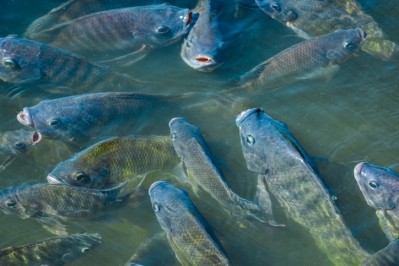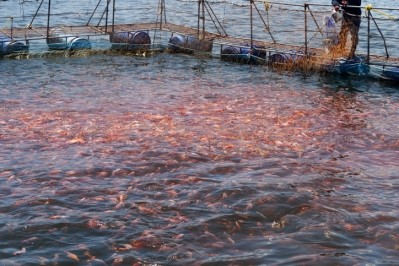special edition: feed sustainability
Team looks to develop novel fish feed ingredients analytical tool

A team from the University of California Santa Cruz (UCSC) were awarded a $245,000 federal grant from the National Sea Grant College Program, part of the National Oceanic and Atmospheric Administration (NOAA). The project is also being supported by non-federal funds.
The idea is to have an online tool that can be used by a wide range of stakeholders to provide an economic and environmental analysis of conventional and alternative aquafeed ingredients,
Currently, the aqua feed sector is experiencing “an exciting creative period” as companies and producers explore the use of novel feed ingredients, said Anne Kapuscinski, primary investigator and professor of environmental studies and director of the Coastal Science and Policy Program at UCSC.
“We started to realize that, in a way, this period of creativity is really exciting, [but] it also feels a little like the Wild West,” she told us. “We realized that there really isn’t a common platform for assessing the relative benefits and drawbacks of these different ingredients.”
The novel ingredients set to be assessed in this project include yeast, microalgae, bacterial biomass or single-cell proteins, and insect meal; they will be compared to conventional ingredients like fishmeal and fish oil, corn and soybean meals and canola oil, Kapuscinski said. Depending on how long the analysis takes, and the data available, additional ingredients may be added to the list.
“At the end of the grant [research phase], we expect to publically release a beta version of the tool,” she added.
“Our goal was to come up with a scientifically verified, common platform that will let everyone use the same decision-supporting tool to compare the economic and environmental performance of different alternative ingredients. We thought that if we can provide [such a] tool and bring along some key industry players as we develop it, then they would have trust in the tool, and when we have it online, we think it could help accelerate innovation, commercialization, and adoption of alternative ingredients."
Developing the database project
The two-year project is set to establish an open access, decision supporting tool, said Kapuscinski.
Their development model includes two types of quantitative assessments that are not often integrated, said Kapuscinski. The group will perform both a technoeconomic analysis (TEA) and a lifecycle assessment (LCA) for the feed ingredients considered.
TEA normally combines process modeling, engineering design and economic evaluation.
There are not many publicly available technoeconomic analyses for aqua feed ingredients, especially for novel ones, she said.
“If your ingredient has a higher digestibility than a conventional ingredient, that would improve its economic viability, but, if it has a lower digestibility, that could lower its economic viability,” she said. “We’re also proposing to include performance parameters on the growth metrics.”
However, one challenge the project faces is the gaps in the publicly available data for both the environmental effects and the technoeconomic analyses of the novel ingredients, she said. The researchers are currently assembling all the publically available data that could be used in both the TEA and LCA to establish a 'metamodel database'.
“You take data from multiple studies and combine it into one model,” she said of the process to establish such a database. “You figure out what assumptions are reasonable to make when you do that, and that will help us to build the lifecycle and the technoeconomic part of the tool.”
“We’ll have to make some educated assumptions, but that then allows you to ultimately produce a more generic tool,” she added of the process.
Being transparent in the development process and allowing the tool to be published online means that it can be updated and improved in the future.
Open access means companies will be able to run their own information through the platform, she added.
Several companies and aquaculture industry representatives are providing feedback on the project to help calibrate the system, said Kapuscinski. “Towards the end of the grant, we’re going to convene a workshop at the World Aquaculture Society meeting to present on our progress, get some more feedback on the tool, as well as carry out some training on it, in order to get people excited about using it,” she added.
Using, establishing a common platform
The tool could be used during different stages of development and allow industry to do “what-if” modeling looking at different assumptions related to the use of the novel feed components, said Kapuscinski.
The system may be useful to help with decisions about focusing on one alternative ingredient or another or what could happen if they were blended, she said.
It is intended to be used by feed companies, those developing novel ingredients, investors, business analysts, government agencies or grant providers and environmental and consumer groups, she said.
It would be a useful resource for fish farmers, said Kapuscinski: “It will help them in the financial management of their farms. If our technoeconomic analysis includes fish performance data, it would help them get a better sense of what buying feed A versus feed B would mean for their bottom line.”
Along with establishing the database, the researchers will be doing some outreach related to using the program, said Kapuscinski.
"We’re hoping that this will become a go-to tool – that all the different players in the sector will use, and it will give everyone a common way of comparing different kinds of ingredients,” she said.
“It will make it easier to have both scientifically informed and levelheaded discussions among different stakeholders – feed companies, aquaculturists who want to buy these feeds and want to know which ones are going to give better results, as well as environmental groups, regulators, and investors,” she added.















